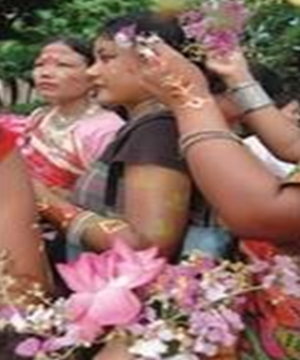Talk:Saguṇa Brahman as Vibhūti-s:Are Vibhūtis Gender Specific
By Sri Vishal Agarwal
Just as Īśvara is worshipped in feminine, masculine, androgynous, and neutral aspects, so are the Vibhūti-s. As stated above, popular Hindu dharm also exhibits the concept of grāma-devatā, in which a local manifestation of the Divine is worshipped as the presiding Devatā of that place.
Many Indian cities and towns, including several important pilgrim centers, have various forms of the Divine Mother as their grāma-devī. As examples, we may cite Ambā who is worshipped in Kolhāpur and Ahmedabad (formerly called Ambāvād); Mīnākṣī who is worshipped in the pilgrim town of Madurai; a form of Satī, the wife of Śiva, worshipped in Jalandhar; and Dhākeśvarī Devī of Dhākā (capital of Bangladesh).
Likewise, forests that provide us with so many resources are said to be presided over by Devī-s who are known as Vanadevī-s (vana = forest). There are numerous rituals involving the veneration of trees, plants, and forests in their feminine form. An example of such ritual is the Karama Pūjā done by Bangladeshi Hindus.
Karama Pūjā by Bangladeshi Hindu women near Dhākā
It is Mātā Gaṅgā, Mātā Yamunā, Mātā Kāverī and so on who have manifested as rivers to nourish mankind. Rivers, their confluences, their mouths, and their origins form prominent Hindu pilgrim centers.
The evening worship of Gaṅgā Mā (Mother Gaṅgā) in the pilgrim center of Haridvāra, with hundreds of lamps which are set afloat on the river at night, is a breathtaking spectacle.

